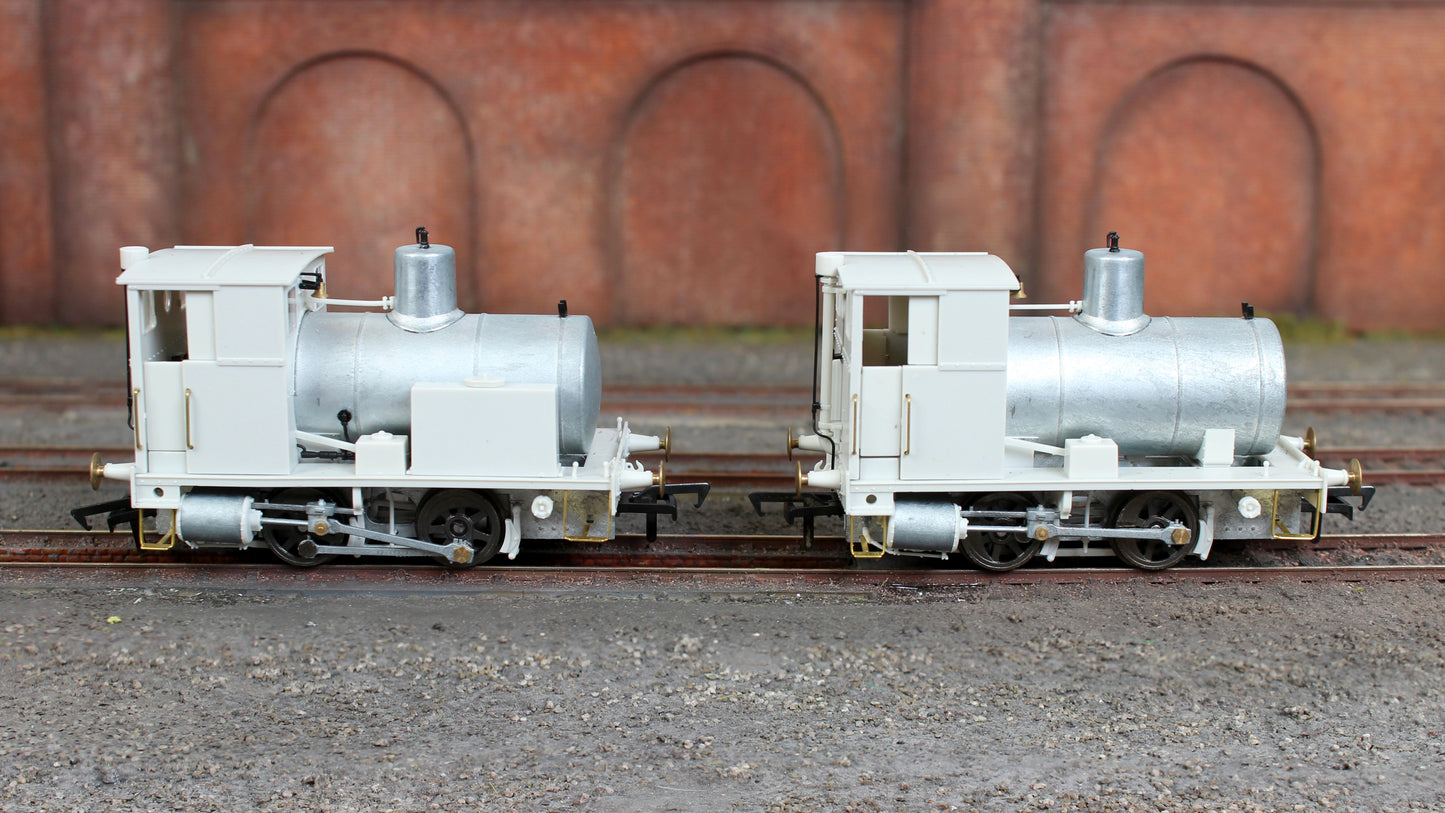Rapido Trains UK 965002 Andrew Barclay Fireless 0-4-0 - Lined Caledonian Blue Steam Locomotive









Product Details
| SKU | RAP-965002 |
|---|---|
| Vendor | Rapido Trains UK |
| Categories | Best selling products Era 3 HO-OO Locomotives New products OO Gauge Locomotives OO Gauge scale OO Gauge Steam Locomotives Pre-Orders Rapido Trains UK Steam Locomotives ‘Caledonia’ 0-4-0 Fireless |
| Scale | OO Gauge |
| Share | |
| Features |
|
Product Description
We’re putting hard-working firemen out of a job with a new announcement of a chuffing Caledonia. We love steam locos at Rapido, and most of them follow similar design principles. The Andrew Barclay 0-4-0 Fireless well and truly takes the design rulebook and throws it out of the window. We are very proud to bring you the first ever ready-to-run OO Gauge British Fireless locomotive.
As the railways established themselves as a reliable method to transport goods, one problem came to the fore – fire. Steam locos fundamentally need a heat source created from some form of fire to turn water into steam. However, this fire (alongside sparks emitted from the chimney) caused great concern in environments where munitions, fuel or other flammable materials were being moved or stored. The solution to the frustratingly flammable freight is a locomotive that won't spark or have a naked flame on board. In more recent years the the answer would be simple - utilise a flameproof diesel or electric-powered loco. However, at the turn of the last century these types of locomotives were just glints in the eyes of railway operators.
Thankfully, some bright spark had the clever idea of harnessing steam power in a large rechargeable steam reservoir, which would sit in place of the boiler of a conventional steam locomotive. This reservoir would be filled with a mix of boiling water and steam at high pressure. As the locomotive worked, the steam would be used and thus the pressure in the reservoir would drop. This in turn allowed the water to start to boil, replacing the steam that had been used. With this method, a locomotive could work for about 4 hours before recharging. The result is a design that has a distinct lack of key features which people associate with more traditional steam locomotives, such as a smokebox and chimney, a firebox, forward-mounted cylinders and coal bunkers or tenders. Its lack of a firebox requires the cylinders to be rear-mounted both to improve efficiency and redistribute the weight of the loco. The other features are missing simply because they are surplus to requirements.
Whether you love or loathe its functional and raw design, you would be hardpressed to argue that the Fireless didn’t push the boundaries of railway design. Engineered to be simple and rugged, they could run anywhere there was an existing steam supply and allowed single-man working. They were also very cheap to maintain. The Fireless was a true pioneer of rechargeable transportation. The largest number of British-built Fireless locomotives was constructed by Andrew Barclay & Co. Ltd.: an impressive 114 were built between 1913 and 1961 of varying designs. It was only fitting that we pick the most numerous of Barclay’s prototypes, the ‘Caledonia’, to produce as the very first ready-to-run OO Gauge British Fireless loco.
These industrial oddities survived far longer than most British Railways and industrial coal-fired steam locos with many examples working into the 1980s and even into the 1990s.
We wanted to represent locos from the 1920s right through to the present day, so we have given a choice of a variety of liveries covering the loco's lengthy history, including two generic variants which represent a typical early and late style ‘Caledonia’ ideal for any industrial layout! We’ve even included a very long-lived loco (Croda Chemical Works) believed to be one of the last working Fireless locomotives in the UK, and potentially the last steam locomotive in regular industrial use across the nation. Perfect to run alongside more modern traction!
These quirky little engines had so many tweaks and subtle changes added over the years that we simply couldn’t cover them all, but we've added a selection of interesting polybag parts such as oil and electric lamps, cab side
windows, low doors, shutters and full cab doors. That way you can personalise them to your heart's content!
DCC Ready and DCC Sound-Fitted options are available. Sound models will be equipped with an ESU LokSound 5 NANO decoder (using an E24 interface) whilst DCC Ready models will have factory-fitted speakers as standard to aid easy upgrading.
-
Straight reservoir supports
-
Early style buffer guides
-
Reducing valve fitted
-
Die-cast metal and injection moulded plastic construction
-
High quality motor and mechanism
-
E24 decoder socket
-
High level of detail with plenty of separately fitted parts
-
Optional user-fitted cab window shutters, doors and lamps.
- NEM 363 dovetail coupling mount








